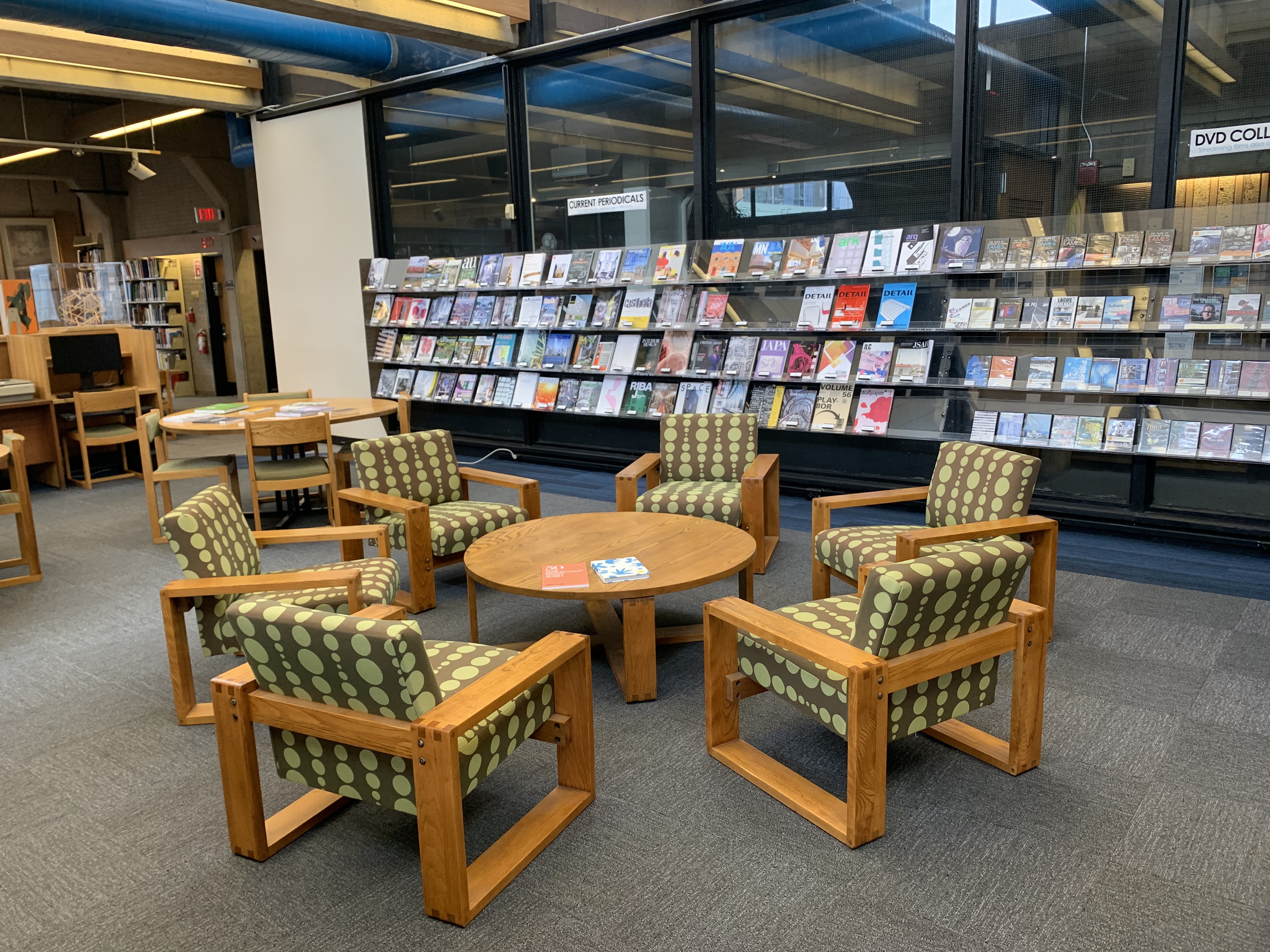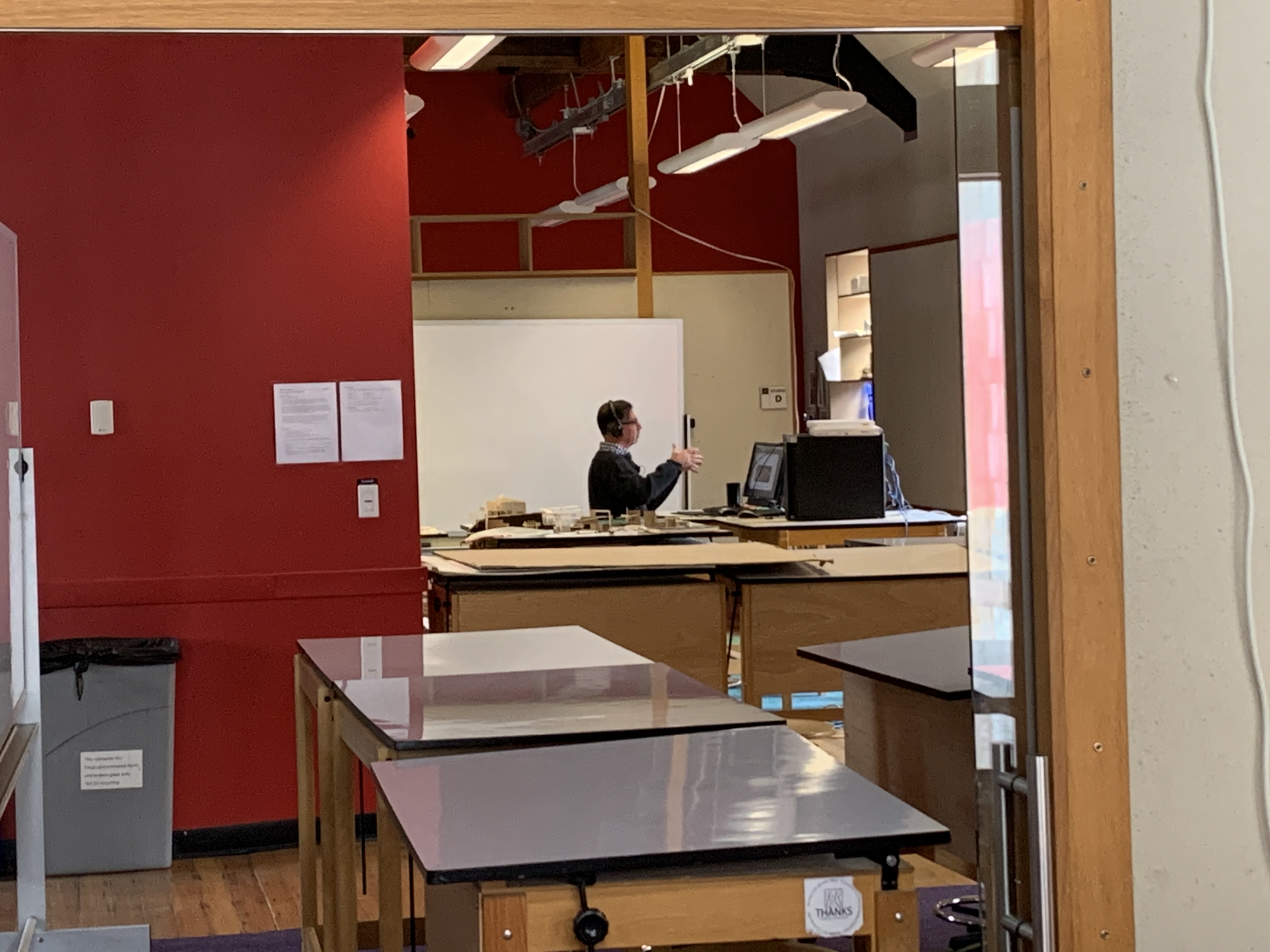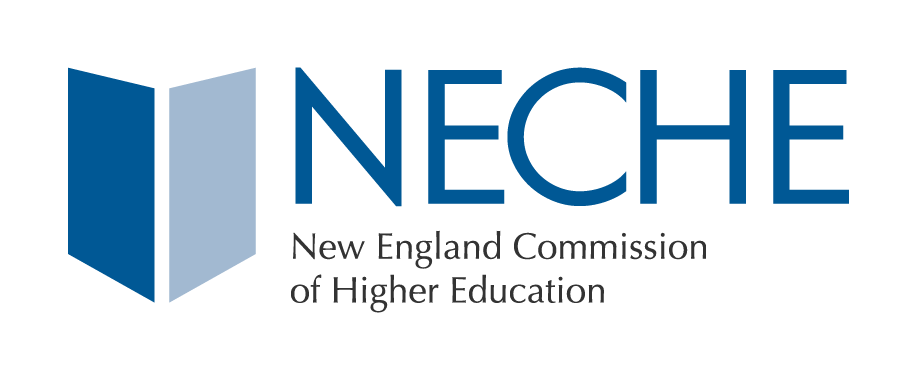Before we kicked off NECHE on the Road, I had planned to visit a nearby institutional neighbor, The Boston Architectural College (BAC). Its President, Mahesh Daas, and I share some history, as we were both doctoral students at the University of Pennsylvania, though at different times–a decade apart, in fact. As you will easily be able to deduce from the above photo, I am the older one, but it was a treat to reconnect. Mahesh is the eighth president of BAC. He is a designer, technologist, and experienced academic leader with a career that spans 23 years at four universities. Prior to becoming president of the BAC, he served as dean of the School of Architecture and Design at the University of Kansas, Lawrence. As was abundantly clear from my visit to BAC’s home in the Back Bay of Boston, Mahesh is definitely not in Kansas anymore.

One of the real joys for me in this new job is getting to know institutions about which I previously knew very little. NECHE accredits a number of the big-name institutions we all recognize: Harvard, Yale, Brown, Dartmouth, MIT, Amherst, Williams, UMass Amherst and so on, but NECHE also accredits small religious institutions, community colleges across New England, and the like. Unless you are from New England, it’s not likely you know even the names of some of these schools. My road trip will take me to a number of the famous and not-so-famous and that’s what I suspect will be special about this journey. The diversity of American higher education is what makes it extraordinary and we can’t afford to lose that spectrum of choice.
A little history …
Despite being New England’s largest private college of spatial design with a 130-year history, BAC is one of those institutions about which I was woefully unaware until yesterday. I suspect that’s true for most of you, too, so here’s a little history. The Boston Architectural College was established as The Boston Architectural Club in 1889 by a group of local architects. According to its original charter, the founders created the Club “for the purpose of associating those interested in the profession of architecture with a view to mutual encouragement and help in studies.” The BAC was envisioned as a broad community not just for architects but also for sculptors, painters, decorative artists, and patrons of the arts. Clarence Blackall, the Club’s first president, was passionate about creating an open and inclusive society. Early on, three guiding principles emerged which to this day have guided BAC’s mission: accessibility, affordability, and concurrent academic and practice curriculum.
One of the real joys for me in this new job is getting to know institutions about which I previously knew very little.
In the 1930’s, BAC’s educational model was re-worked, replacing the Beaux-Arts system of architectural training, which centered on classical architecture, with a modernist curriculum that emphasized history and theory, materials and methods, geometry, perspective, city planning, and architectural practice. The BAC’s alternative model of educating and training working professionals in affordable evening courses and studios continued alongside the modernized curriculum. In 1944, the BAC evolved from a social club to a public educational center which prompted a formal name change to The Boston Architectural Center.

In the wake of the Second World War and with the passage of the GI Bill®, new members began to join the Center in order to train for a completely new career. In the next few years, the BAC formalized its educational offerings for the first time, awarding a Certificate of Completion for graduation from the five-year program. The first BAC certificate student graduated in 1952. As a first professional degree began to be a requirement for licensure in architecture, the BAC decided to apply for professional accreditation. In 1971, the National Architectural Accrediting Board (NAAB) came to the BAC for its first accreditation visit. Impressed by the unique curriculum, NAAB awarded the BAC full six-year accreditation, making it the only accredited certificate in architecture in the US and the first accredited program with a structured work component.
In 1996, the Center began offering its first professional master’s degrees in architecture and interior design. Over the next twenty years, new programs continued to be launched. The BAC introduced a Bachelor of Design Studies in 2004 and a Bachelor of Landscape Architecture in 2007, followed by master’s degrees in those programs in 2009 and 2010. In 2013, interior design was renamed interior architecture to reflect the complex role of the interior architect in building design.
An early adopter of distance learning …
Following a reaccreditation visit in 2005, the NAAB fully accredited BAC’s innovative distance program, which allows students to complete the majority of their degree online with an on-campus intensive week each semester. (The BAC’s Distance Master of Architecture was the first NAAB-accredited low-residency program in the country.) In 2006, the BAC recognized the significant advances in its educational programs by formally changing its name–but happily not its acronym–to The Boston Architectural College.

So that’s a little history. Five things stood out for me during my visit:
- BAC’s sticker price of just over $12,000 a semester for its undergraduate program, makes it a compelling value
- BAC is firmly committed to educate a diverse student body, with almost half its student body being students of color
- It boasts an incredible location in Boston’s Back Bay
- BAC’s unique approach integrates paid work with local design firms into its educational program, and finally…
- Thanks to BAC’s early move to online education, the college has thus far been able to skillfully navigate the pandemic. Enrollment this fall actually increased over last year, and because BAC has never relied on room and board for revenue, it’s now in a stronger financial position than ever before.
Unfortunately, that is something I suspect you won’t hear from many other institutions during this trip.
I want to thank Mahesh and his team for being so generous with their time. BAC was a great first stop for NECHE on the Road. I’m very much looking forward to heading out October 18 and seeing where this road will lead and how we, as an organization, will apply what we learn along the way. And please listen to my podcast for an in-person interview with President Daas.
Enjoy the ride!

